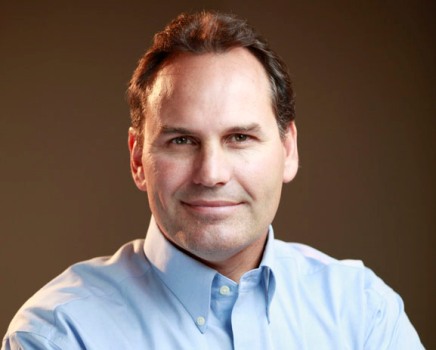Episode Highlights: Time Management And Becoming An Effective Entrepreneur
- Why time management won’t solve your time management problems
- Why being productive or efficient doesn’t necessarily make you effective
- Why the biggest difference between you and the most successful entrepreneurs is effectiveness — and how can you become an effective entrepreneur by spending 10 minutes a day (the right way)
- The 10-Minute Get Clarity And Take Control Over Your Time Exercise — the only time management system you’ll ever need
- Why doesn’t time management work and how time hacking solves it
Why Time Management Is An Entrepreneur’s Biggest Problem
Whether you are an experienced entrepreneur, a side hustler, or even only an aspiring entrepreneur, there are two resources that determine your chances of success. Running out of any of the two would mean the failure of your entrepreneurial business.
Can you guess the resources I’m talking about?
If you guessed time and money, you are correct.
Since money is what puts food on the table, it’s kind of obvious why running out of it would spell “game over” to your business. Time, on the other hand — is a pretty interesting resource.
The thing about time, especially for entrepreneurs, is that we always seem to be running out of it. No matter how much time we have it never seems to be enough to fit all the projects, tasks, errands, and obligations that we have.
Running out of time means we don’t get our projects done when they should be done, we don’t get them done to the quality want, we miss out on business opportunities, and then — when we finally have time for them — it’s too late.
Running out of time means we don’t sleep enough, we don’t function as well as we could, we can’t afford spending time with our loved ones and doing the things that actually matter to us the most.
While business acumen, marketing strategies, sales page theory, and social media marketing are indeed important for a business to succeed, when a business is run as successfully as possible in all of the above except time, the owner has no way to actually enjoy it.
This is why today, we tackle the biggest question entrepreneurs have been struggling throughout entire history: How do I make it happen with the time that I have?
From Time Management To Time Hacking
Time management is generally the title of all the systems, processes, and methods that aim at shaping the way you run your business, your calendar, your projects, and your tasks into a rigid structure that will supposedly would fix all of your problems, reduce stress, eliminate confusion, give you focus, and make you a master of your own time.
The only problem with that concept is that we are all adults. Whether you are 25, 35 or 55, it’s probably too late for you to change your habits and their triggers to fall into place with someone else’s system.
Let’s face it — most time management strategies were born because someone was doing something that worked for him, and when asked how they do that, they try to teach others to replicate the same.
Srini Rao and I discussed this on IIP023: Confessions Of A Corporate Misfit — the problem with spreading best practices starts when people follow them blindly instead of learning from them and customizing.
This is where time management comes into play. Instead of reshaping the way you manage everything in your life, time hacking is all about getting clarity, about what needs to be done, and then reshaping time to fit your goals, aspirations, and lifestyle.
At its very core, time hacking is inherently customizable. In fact, time hacking is more of an ideology or a framework rather than a method. And from New York Times bestseller to some of the internet leading entrepreneurs, it’s making huge waves right now.
Today’s Guest

Today we are joined by Julie Sheranosher; entrepreneur, author, ex-captain in the Israeli Defense Forces, and the creator of time hacking.
For full disclosure and in order to make sure I don’t annoy my friends in the Federal Trading Committee, I will also mention that she’s my personal time coach as well as my girlfriend for the last five years.
When Julie and I started dating, she was a captain in the Israeli Defense Forces, in-charge of systems that are crucial to the nation’s safety. She had a good dozen of subordinates that sought her guidance not only in their professional lives in the army, but also in everything else. As you could guess, she was quite busy.
The “I’m Busy” Syndrome
In fact, she was suffering from a severe case of the “I’m Busy” Syndrome.
We’ve all been there; we have so much work to do, whether it’s for our full-time business, our side hustle, or our corporate job — that we run around like headless chickens.
We don’t have time to answer e-mails, we don’t have time to spend with our families and friends, we don’t have time to take care of ourselves, to do sports, to eat right or to unwind. But the worse part of it is that we take great pride at being so busy (at least I did).
Being busy makes us feel important. In the western world, being busy makes us feel fulfilled. It’s not surprising that the being busy syndrome is the number one enemy of time hacking. As I mentioned above, in time hacking, there’s an emphasis between productivity, being efficient and being effective:
- Productivity: The art of scratching things off of your to-do list, with no specific regard to their importance or urgency. Often the most practised skill of time management/time hacking as it simply makes us feel great.
- Being efficient: Being efficient takes productivity to the next level, and basically means that not only we are crossing things off our to-do list, but we are actually doing it as quickly as possible while completing each task within the best context to get it done (for instance, using our commute time to answer e-mails, make calls, etc.).
- Being effective: Being effective is the holy grail of time hacking and the one thing truly missing out of most “time management” systems.
Being effective means you’re not only crossing stuff out of your to-do list, and doing that in the best context possible and in the shortest amount of time, but you are also doing only the right things (something James Schramko mentioned as one of the three key things to becoming a successful entrepreneur and running a successful business).
Mission Impossible
So as I mentioned, when Julie and I started dating she was a very very busy person. Working for 16, sometimes 18, hours a day, she couldn’t imagine herself leading her life differently. For her, she was doing everything right. Being honest, I wasn’t much different: I was running my software development business and probably working the same hours as her if not more.
Until one Friday, the accumulated stress of being over-worked for so many years in the army, being in a sedentary job with no time to take care of herself, broke Julie. Literally.
She herniated a disc, and instead of going to her soldiers on Sunday, she had to go and see an orthopedic. Taking a look at her x-rays and CAT-scan, the doctor had a simple piece of advice for her: “You need to start working four hours a day.”
For Julie, and probably for you too, switching from a full-time job (or an over-time job like Julie had) to four hours per day is simply impossible. She thought the doctor used four hours as a figure of speech. “I thought he meant I need to work like all the normal people, like nine hours per day.”
And so Julie started working only nine hours a day and trying all the time management techniques she could find to try and fit her 18-hour workday into 9. It didn’t quite work.
Time Management Not Working
Trying as hard as she could, it didn’t work. Julie started failing on deadlines, on projects, feeling she’s failing her subordinates and her commanders. For almost any workaholic that I know this is a terrible hit to the ego and to the self-confidence. Unfortunately, she would have to fall even lower before she’d find a solution.
Mission Impossible II
Three months after her first injury, Julie herniated two more discs. By then she needed help to get off the sofa and into the shower. She was in constant pain, unable to enjoy neither time at home and especially not at work.
Back at the doctor’s office, he told her: “You might have misunderstood me. When I told you you need to work four hours a day I meant no more than four hours a day. That is, unless you want to reach the age of thirty in a wheelchair.”
Working 4- hour shifts are completely unheard of in the Israeli Army, and probably in any major corporate around the world. Suddenly Julie became the ugly duckling, the one that people talk about behind their back, whispering and pitying. And she felt that she was failing more than ever. If she couldn’t get eighteen hours of work done in nine, how can she ever get them done in four?
Giving Up
Frustrated with failing and facing the impossible, Julie just gave up.
She gave up on her dream of becoming a great, acknowledged and respected commander. She gave up her dreams of promotion and prizes. She gave up everything she thought she had to offer.
Out of complete frustration, and trying not to lose herself, she decided to toss aside everything she knew about managing her time, her job, and her life, and focus on one simple thing:
Choose the one thing that has the biggest impact every day and do only that.
Understanding she’ll never get the job done, Julie put aside the to-do list and started living by this new mantra. She would get to the office, do the one thing that was most important for her that day, the one thing that she felt would put a dent in the universe, and only after that try to do anything else.
Suddenly things were changing: A few weeks later, she was sitting in front of a computer on a Tuesday morning, realizing that she completed all of the tasks that she planned for that week. For her that was the beginning of time hacking. For us this is the beginning of becoming an effective entrepreneur.
Finding Success Through Failure
Following the surprising finding, Julie started documenting everything she was doing: What kind of tasks was she completing, at what times were those tasks, working the best for her, what was her attention span, what stuff was she getting far time quicker in the morning rather than in the afternoon. Slowly but surely she figured out her personal time hacking framework.
This is why time hacking is nothing like any time management framework you’ve seen. It’s 100% customized to the time you actually have to the way you work and with what’s available to you. It builds upon your strengths rather than having you fighting yourself around your weaknesses.
In today’s episode Julie shared the first step you need to take to become a time hacker and your own master of time. It’s a 10-minute exercise that will help you get clarity and learn how to prioritize your goals, project, and obligations and make time work around them instead of you chasing after time.
Listen to today’s episode for the full story of how to make it happen, or simply check out Julie’s Daily Planning Toolkit on her website.
Mentioned Resources
- Julie’s website and e-mail
- Julie on Twitter (@ImJulieTweets), LinkedIn and on Instagram
- Time Hackers Podcast and Time Hackers Hero Edition on ImJulie and on iTunes
- Time Hackers on Facebook and Google+
- Time Hackers Gain Control Series
- Julie’s book: Corporate Games available on ImJulie or in Amazon
- Julie’s Daily Planning Toolkit
- Pat Flynn’s Folder Time Management System
- Podcast Starter Kit
I Need Your Help!
If you haven’t already, I would love if you could be awesome and take a minute to leave a quick rating and review of the podcast on iTunes by clicking on the link below. It’s the most amazing way to help the show grow and reach more people!
Leave a review for Meron’s podcast!
Affiliate Disclosure: Please note that some of the links above are affiliate links. There is no additional cost to you, and I will earn a commission if you decide to make a purchase.























